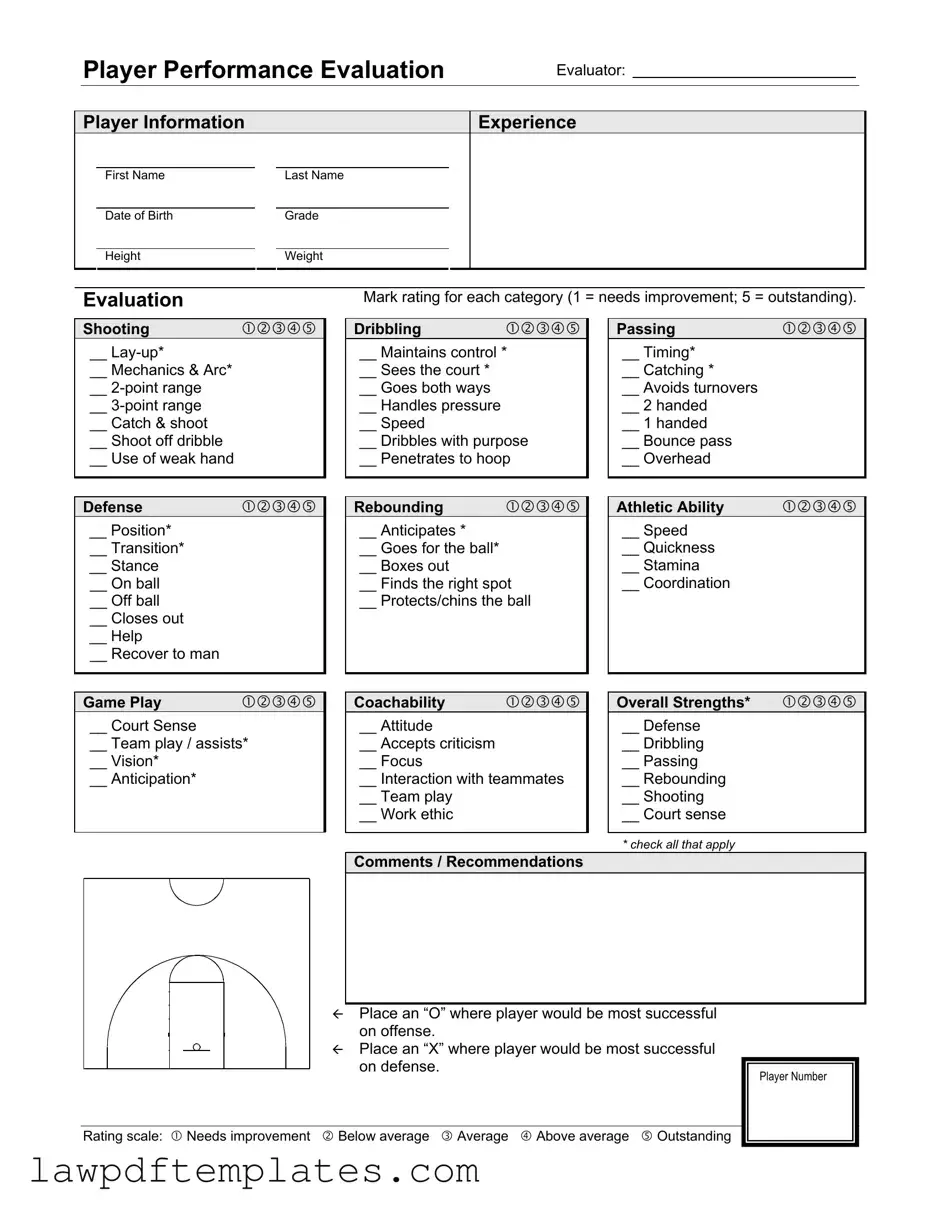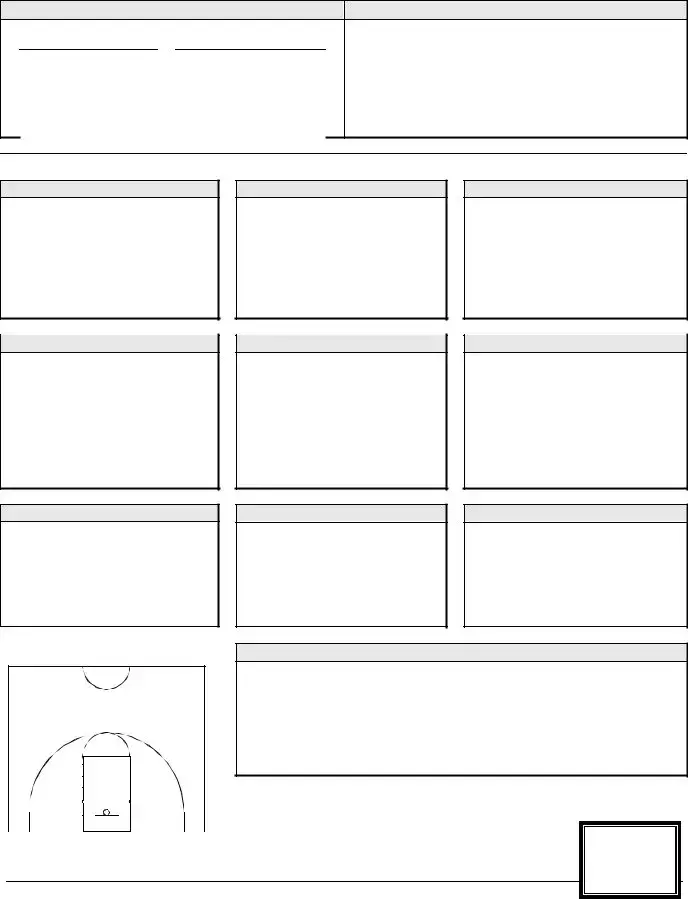Filling out the Basketball Evaluation form can be straightforward, but several common mistakes can lead to inaccuracies. One frequent error is leaving sections blank. Each category, from shooting to defense, requires attention. Omitting a rating means missing out on providing a complete picture of the player's abilities.
Another common mistake is misunderstanding the rating scale. The form uses a scale from 1 to 5, where 1 means "needs improvement" and 5 signifies "outstanding." Misinterpreting these numbers can lead to skewed evaluations. For example, giving a player a 2 when they truly deserve a 4 can misrepresent their skills.
People often forget to check the applicable categories. The form includes several areas where evaluators can mark strengths with an asterisk. Failing to check these can overlook important aspects of a player’s game. It is essential to review each section carefully to ensure all relevant skills are acknowledged.
Another mistake involves not providing specific comments or recommendations. The comments section is an opportunity to highlight strengths and suggest areas for improvement. Without these notes, the evaluation may lack context, making it harder for coaches to understand the player's potential.
Some evaluators may also rush through the form, leading to hasty judgments. Taking the time to assess each skill accurately is crucial. Quick evaluations often miss nuances that could be significant in a player’s development.
Additionally, not considering the player's overall strengths can be a pitfall. The form asks for an overall assessment of skills like defense, dribbling, and shooting. Ignoring this section can result in a less comprehensive evaluation, which might affect future training decisions.
Lastly, failing to communicate with other coaches or evaluators can lead to inconsistencies. Collaborating with others who have observed the player can provide a more rounded view. This teamwork can enhance the accuracy of the evaluation, ensuring that all aspects of the player's performance are considered.

